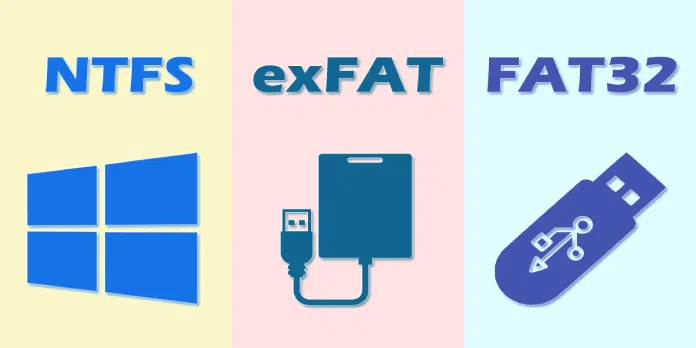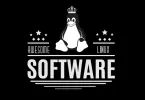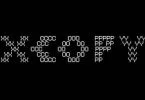Have you ever thought about the differences between Three File Systems- FAT32 vs NTFS vs exFAT, and what is a file system?
What Is A File System?
A file system is a set of rules used to decide how data is stored and fetched in a storage device, be it a hard drive, flash drive, or something else. Like the conventional way we used to store data in our offices in different files, the same method is deployed in computing.
- Windows supports three different file systems which are NTFS, FAT32, and exFAT.
- NTFS is the most modern file system. Windows uses NTFS for its system drive and, by default, for most non-removable drives.
- FAT32 is an older file system that’s not as efficient as NTFS and doesn’t support as big a feature set, but does offer greater compatibility with other operating systems.
- exFAT is a modern replacement for FAT32 and more devices and operating systems support it than NTFS but it’s not nearly as widespread as FAT32.
What Is the FAT32 File System?
Standing for File Allocation Table, it’s the oldest and the most experienced file system in the history of computing. The story started in 1977 with the original 8-bit FAT file system intended as an antecedent to Microsoft’s Standalone Disk Basic-80, which was launched for Intel 8080-based NCR 7200 in 1977/1978, a data entry terminal with 8-inch floppy disks. It was coded by Marc McDonald following discussions with Microsoft’s co-founder Bill Gates.
Further utilization of the FAT File System or FAT Structure as it was called referred to earlier, was done in Microsoft’s 8080/Z80 platform-based operating system MDOS/MIDAS written by Marc McDonald, who was Microsoft’s first salaried employee. In the subsequent years, the FAT file system advanced to FAT12, FAT16, and finally, FAT32 that has been synonymous with the word file system when we have to deal with external storage media like removable drives.
FAT32 was a surmount to the limited volume size offered by the FAT16 file system. The 32-bit File Allocation Table was released in August 1995, with the Windows 95 operating system. It allows you to store files of size up to 4 Gigs and the maximum disk size can go up to 16TB. So, the fatty file system can’t be used to install heavy apps or store large files, that’s why modern Windows uses a new file system known as NTFS, for which we don’t have to worry about the file size and disk size limits.
The FAT32 file system is perfect for storage devices like flash drives but you’ll have to make sure you don’t have an individual file larger than 4 GB. It has been widely implemented beyond the realm of computers, like gaming consoles, HDTVs, DVD & Blu-Ray players, and practically any device with a USB port. All versions of Windows, Linux support the FAT32 file system, even Apple’s Mac provides complete support.
- FAT32 is the oldest of the three file systems available to Windows. It was introduced all the way back in Windows 95 to replace the older FAT16 file system used in MS-DOS and Windows 3.
- Individual files on a FAT32 drive can’t be over 4 GB in size—that’s the maximum. A FAT32 partition must also be less than 8 TB, which admittedly is less of a limitation unless you’re using super-high-capacity drives.
- Modern versions of Windows can no longer be installed to a drive formatted with FAT32; they must be installed to drives formatted with NTFS.
- Compatibility: Works with all versions of Windows, Mac, Linux, game consoles, and practically anything with a USB port.
- Limitations: 4 GB maximum file size, 8 TB maximum partition size.
- Ideal Usage: Use it on removable drives where you need maximum compatibility with the widest range of devices, assuming you don’t have any files 4 GB or larger in size.
What Is the NTFS File System?
Another Microsoft proprietary file system was introduced in 1993 with their Windows NT 3.1 coming into existence. It offers inexhaustible file size limits and you won’t run out of it anytime soon. The development started in the mid-1980s as the result of an association between Microsoft and IBM to develop a new age operating system with better performance in terms of graphics. However, their friendship didn’t last long and the two parted ways consequently developing their version of the new file system. IBM made HPFS which was used in the OS/2 operating system and the Redmond created NTFS v1.0 released with Windows NT 3.1.
The NTFS or New Technology File System offers a theoretical file size of 16 EB – 1 KB which is 18,446,744,073,709,550,592 bytes. Well, your files aren’t that much huge, I guess. Its development team included Tom Miller, Garry Kimura, Brian Andrew, and David Goebel. NTFS v3.1 was launched with Microsoft’s Windows XP and it hasn’t been changed much since then, although numerous additions like partition shrinking, self-healing, and NTFS Symbolic links have been added. Also, the implemented capacity of the NTFS file system is only 256 TB out of the whopping 16 EB – 1 KB which was done with the launch of Windows 8, for which Microsoft ended support last week and Windows Server 2012.
Other notable features include reparse points, sparse file support, disk usage quotas, distributed link tracking, and file-level encryption. The NTFS file system supports backward compatibility with the previous versions and it’s a journaling file system that proves to be an important tool when it comes to reviving a corrupt file system. It maintains a Journal, a data structure that keeps track of any potential modifications to the file system and is used to recover the file system.
This file system is supported by Windows XP and later versions. Apple’s Mac OSX provides read-only support to an NTFS-formatted drive and only a few Linux variants can provide write support for NTFS.
- NTFS is the modern file system Windows likes to use by default. When you install Windows, it formats your system drive with the NTFS file system. NTFS has file size and partition size limits that are so theoretically huge you won’t run up against them.
- NTFS first appeared in consumer versions of Windows with Windows XP, though it originally debuted with Windows NT.
- NTFS is packed with modern features which are not available on FAT32 and exFAT. NTFS supports file permissions for security, a change journal that can help quickly recover errors if your computer crashes, shadow copies for backups, encryption, disk quota limits, hard links, and various other features.
- Compatibility: Works with all versions of Windows, but read-only with Mac by default, and maybe read-only by default with some Linux distributions.
- Limitations: No realistic file size or partition size limits.
- Ideal Usage: Use it for your Windows system drive and other internal drives that will just be used with Windows.
What Is the exFAT File System?
The exFAT (Extended FAT) is another Microsoft proprietary file system that finds its use in ball games where the FAT32 feels out of breath. Most of the modern digital cameras use exFAT. High-capacity SDXC memory cards are now pre-formatted with the exFAT, as it is lightweight in contrast to NTFS and supports a file size of more than 4 GB. So, if you have an exFAT SD card you will have no issues while copying full-length HD movies on it which is not the case with FAT32.
Currently, Microsoft holds the US Patent 8321439 for Quick File Name Lookup using Name hash, which is a method that escalates file search speed. They’ve not released a complete specification set for the exFAT file system, for which the vendors have to obtain a restricted license from Microsoft. Most of the countries recognize the US Patent Law and thus, any implementation of the exFAT file system is not possible for the vendors intended to be a part of an open-source operating system or commercial software.
Microsoft’s stubbornness to make the exFAT available freely has triggered the development of custom implementations of the file system. A FUSE-based version of the exFAT file system, named exfat-fuse, provides read/write operations for many Linux distributions including FreeBSD. A kernel-based implementation made by Samsung was accidentally leaked on GitHub but was later published officially.
Launched in 2006, it has the same 16 EB file size limit as NTFS, but it is way lighter as it doesn’t contain many of the extra features that the latter has. Talking about compatibility, full read and write support is provided by Mac, Android, and Windows operating systems but for Linux distributions, the appropriate software facilitates the support.
- The exFAT file system was introduced in 2006 and was added to older versions of Windows with updates to Windows XP and Windows Vista.
- exFAT is optimized for flash drives—designed to be a lightweight file system like FAT32, but without the extra features and overhead of NTFS and without the limitations of FAT32.
- exFAT has very large limits on file and partition sizes., allowing you to store files much larger than the 4 GB allowed by FAT32.
- Compatibility: Works with all versions of Windows and modern versions of Mac OS X, but requires additional software on Linux. More devices support exFAT than support NTFS.
- Limitations: No realistic file size or partition size limits.
- Ideal Usage: Use it when you need bigger file size and partition limits than FAT32 offers and when you need more compatibility than NTFS offers.
Difference Between FAT32 vs NTFS vs exFAT Systems






Leave a Comment